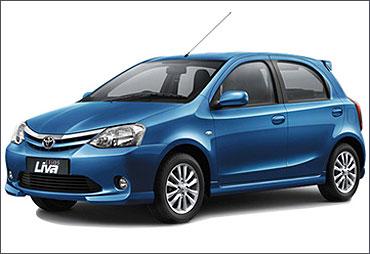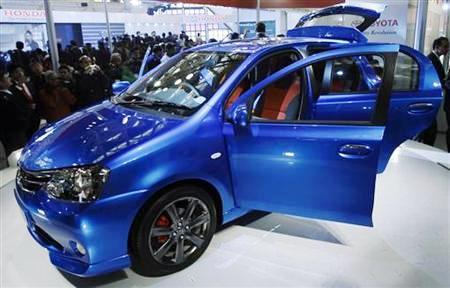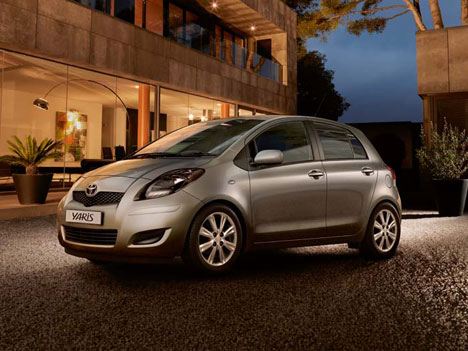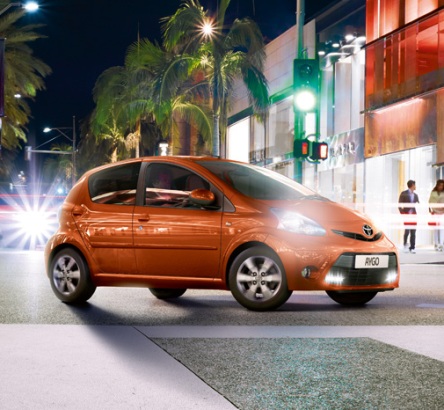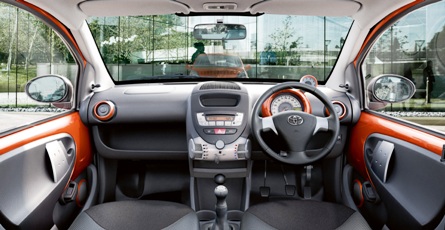 | « Back to article | Print this article |
Toyota looks at more small cars for India
Japanese auto giants Toyota and Suzuki are set to fight on Indian turf, with Toyota hinting at bringing multiple products in the small car segment to take on the might of market leader Maruti Suzuki India Ltd.
Toyota is working on developing six subcompact cars as part of its global strategy to increase volumes in emerging markets over the next four years.
It aims to add to its portfolio of entry-level cars in the Indian market.
Hiroshi Nakagawa, managing director, Toyota Kirloskar Motor, said, "Globally, we have outlined a strategy to launch eight subcompacts in emerging markets by 2015.
"Two cars on the Etios platform have already been introduced. India is an important market. We will launch more small cars in the country."
The company is assessing the suitability of introducing the six subcompacts under development in the market in India.
Click NEXT to read further. . .
Toyota looks at more small cars for India
Prices to be raised
TKM said it would increase the price of vehicles by up to two per cent within a day or two to offset the impact of rupee depreciation.
"There is a tremendous pressure on price due to the rupee depreciation.
"We are unable to hold on to the existing prices of our vehicles and there will be a hike in prices within a day or two," said Sandeep Singh, deputy managing director (marketing), Toyota Kirloskar Motor.
The company is looking at raising prices by one-two per cent.
Toyota had earlier stated that for a fall of every rupee against dollar, it loses about Rs 90 crore (Rs 900 million) on a yearly basis.
Click NEXT to read further. . .
Toyota looks at more small cars for India
In the last four months, TKM has lost an average of about Rs 15 crore (Rs 150 million) every month, totalling to about Rs 60 crore (Rs 600 million).
With petrol vehicles already suffering a demand slump due to hike in prices of the fuel, Singh hinted that the petrol models could be spared from the price hike.
TKM is looking to sell 180,000 vehicles this year as compared to 130,000 units sold in 2011.
Currently, Maruti Suzuki with about a half dozen models, ranging from the best-selling Alto to the WagonR, Swift and Estilo, accounts for 46 per cent of the small car market in India.
Click NEXT to read further. . .
Toyota looks at more small cars for India
Toyota has a sole contender, the Liva (in the premium hatchback segment), with a market share of two per cent in the category.
"In saturated markets of the United States, Europe and Japan, we have less room to grow. We are, therefore, focusing on countries like Brazil, Russia, India and China and countries in the Asean region to gain volumes," added Nakagawa.
Sales for Toyota fell seven per cent in Anerica and by 23 per cent in Japan in 2011 (the company had taken a hit due to the tsunami in Japan).
Despite inflationary pressure affecting economic growth in important markets such as India and China, the company's sales from Asia are expected to increase in the near future.
Click NEXT to read further. . .
Toyota looks at more small cars for India
At present, emerging markets account for 40 per cent of global sales for Toyota.
Over the next four years, the company wants to add to the product portfolio in India, China, Russia, Brazil, Vietnam and Indonesia, raising sales contribution by an additional 10 per cent from these countries.
By 2013, production capacity in emerging markets will rise to 3.1 million vehicles a year, from 2.38 mn in 2010, matching the level in Japan, Toyota said.
In India, the company hopes to enhance capacity to sell at least 350,000 units by 2015.
This is close to what the country's second largest car maker, Hyundai Motor India, sold in the domestic market in 2011-12 (388,779 units).
Click NEXT to read further. . .
Toyota looks at more small cars for India
TKM had announced an investment of Rs 300 crore (Rs 3 billion) in March and of another Rs 898 crore (Rs 8.98 billion) in July 2011 to increase capacity to 310,000 units in India in 2013.
Volkswagen AG has announced its intention to topple Toyota as the world's largest car maker by 2018.
In 2011, Volkswagen AG sold 8.3 million vehicles worldwide, compared to Toyota's 7.95 million.
With sales in developed countries largely stagnant, India and developing markets such as Brazil, Indonesia, Russia and China could decide who wins the race.
